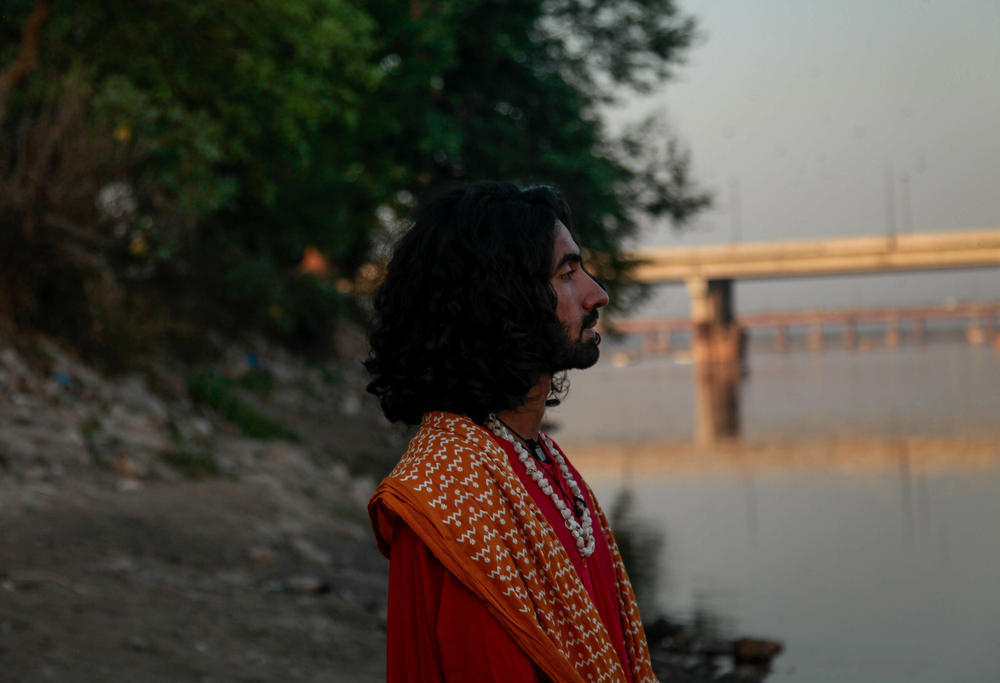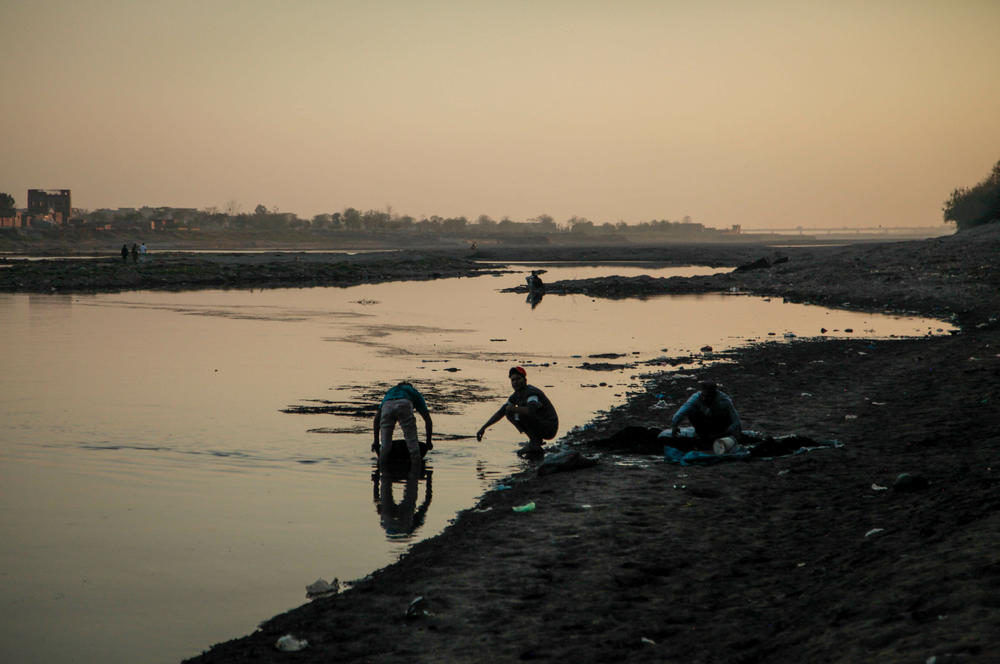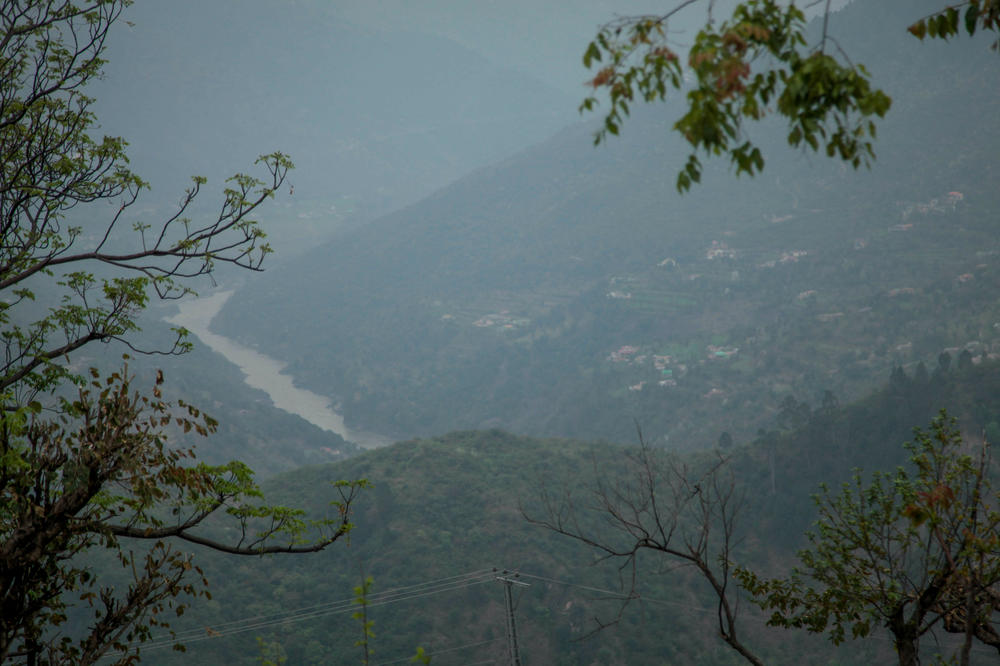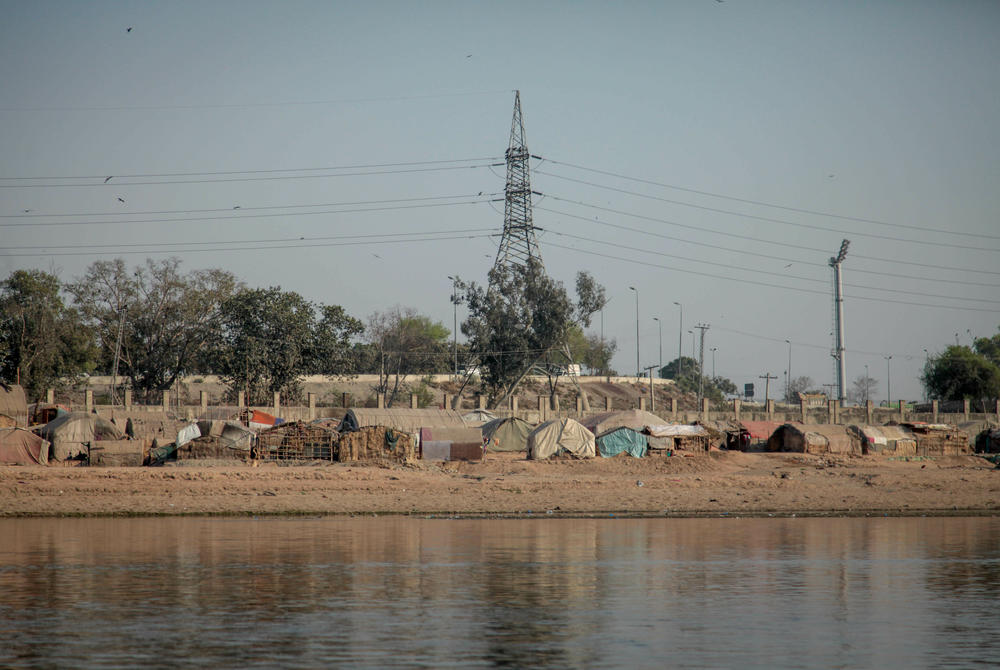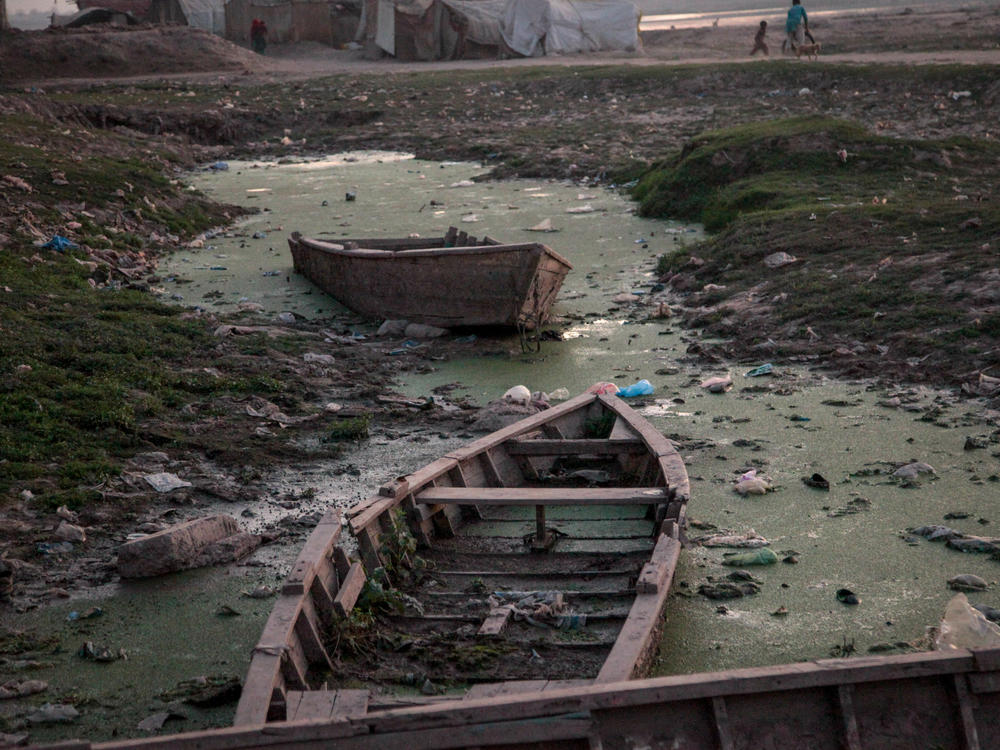Section Branding
Header Content
Is a 1960 treaty between Pakistan and India killing the mighty Ravi River?
Primary Content
LAHORE, Pakistan – Abuzar Madhu sits by the Ravi, a storied river that begins in the Himalayas of northern India and crosses into Pakistan. Madhu, an artist and environmental activist, embraces an ancient South Asian tradition of river worship. "She's a mother," Madhu says. "She's also a God."
Ships once sailed the broad and wide Ravi. Hindu and Muslim saints lived by the banks and people still worship at shrines built in their honor. But the river flowing past Madhu is not the Ravi of history. It is now a stinking, dirty ribbon flowing between dusty banks, a dump for industry, agriculture and sewage, one of the world's most polluted bodies of water.
Environmentalists and activists alike say a treaty is partly to blame for killing the Ravi: the Indus Waters Treaty between Pakistan and India, signed in 1960.
In March, one water expert, Hassan Abbas, described the Indus Waters Treaty as causing "ecocide" and tells NPR that he hopes the treaty is in peril.
"If the treaty is in trouble, and it gets nullified," he said. A new river water treaty could be negotiated "in line with emerging trends of sustainability and environmental protection and restoration of degraded ecosystems."
But if the Indus Waters Treaty is loathed by environmentalists, it is also credited with preventing war over water between India and Pakistan by dividing the six rivers that crisscross the two countries. That is no small feat: India and Pakistan, both nuclear-armed, have waged war three times and had multiple smaller conflagrations. They remain hostile neighbors 75 years after both countries were partitioned.
"In fact the treaty has been honored by both sides, even during the wars," according to Shekhar Gupta, the editor-in-chief of the Indian newspaper, The Print. Gupta spoke about the treaty on Cut The Clutter, a news show he hosts. "The treaty has stood the test of time, and the water has continued to flow as they [the rivers] were committed in the treaty," he says.
A treaty that divides rather than shares
The treaty divides six rivers that traverse both countries, allowing Pakistan and India to use their three waterways as they like. India has largely diverted its rivers into dams and canals, like the Ravi. Now downstream in Pakistan, it's a trickle of its former size.
"These are not small rivers. They are rivers rivaling the size of the Colorado River," says Abbas. Of the Indus Waters Treaty, he says dividing up rivers and not letting them flow "is something unthinkable today" because in contemporary times "you cannot think of shutting down a river."
The Indus Waters Treaty is singularly peculiar, says Pakistani environmental lawyer Rafay Alam because the treaty "divides water rather than shares it."
That reflects the violence surrounding the creation of India and Pakistan. "The treaty was in some ways, the unfinished business of partition," Alam says, referring to when the British divided their former colony into two countries: India and Pakistan. The partition triggered murderous sectarian violence. Millions of Muslims fled to Pakistan; Millions of Hindus and Sikhs fled to India. The brutality of partition led water negotiators to the conclusion that the two countries would not be able to share water, so the treaty divided up the rivers instead.
India's dams bring tensions
But now, the treaty is facing its toughest test in decades. "The level of mistrust is at the highest," says Jamaat Ali Shah. He used to represent Pakistan on a bilateral commission that oversaw the implementation of the Indus Waters Treaty.
Experts say the tensions largely began when India started building hydroelectric dams on the upper portions of rivers that are allocated to Pakistan in the early 2000s.
India is allowed to build structures that generate power under the treaty's terms. But many in Pakistan fear India's ultimate aim is to interrupt the flow of water. "Any such effort from India to stop water — I can't foresee good results because this water is [a] lifeline for Pakistan," says Shah.
Two hydroelectric plants in particular worry Pakistan: one being built on the Chenab, a river that forms in India and flows into Pakistan, and another built on a river known in Pakistan as the Jhelum. That plant diverts water out of the Jhelum, and Pakistani officials say it has diminished the power of their own hydroelectric plant built on the Pakistani side of the river.
In 2016, Pakistan appealed to the World Bank, which acts as a quasi-third party to the treaty. It asked the Bank to hold a court of arbitration to consider whether the design of India's hydroelectric schemes violates the treaty. This frustrated India, says Gupta, the editor-in-chief of The Print, in his video explainer, because a court can delay a project for years. To Indian officials, it looked like Pakistan was trying to play the role of a spoiler – adding to popular frustrations, because while both countries are allocated three rivers each, the bulk of the water flows in the rivers allocated to Pakistan. "India said, look, this has gone on for too long," says Gupta. "All our projects have got delayed like this."
India asked instead for the World Bank to appoint an expert to look at the dams, which is less of an escalation.
The World Bank initially allowed both and then paused both to try a middle ground – mediation. Gupta says, "but once again both countries kept fighting, fighting, fighting" over the hydroelectric projects.
So the World Bank halted mediation and in April, 2022, took two actions: As Pakistan wanted, it resumed the court of arbitration. As India wanted, the neutral expert was called back. A bank spokesperson tells NPR that it allowed both actions, simultaneously, because years of stalemate would be "a risk to the Treaty itself."
Already, there are problems.
First, India boycotted the court of arbitration, Gupta says. On January 25, India sent a notice to Pakistan that it wanted to modify the water treaty directly with Pakistan, excluding the World Bank. Pakistan responded, says Syed Muhammad Mehar Ali Shah, who is in charge of water treaty issues for Pakistan. "We would like to hear the concerns of the Indian side," he says, but declined to elaborate.
While Shah didn't offer more detail, Daniel Haines, a specialist in South Asian water politics, says Pakistan wants to keep the World Bank as a third party because Pakistan is the weaker party: it's on the brink of default and mired in political chaos. Meanwhile, India is the world's fifth largest economy. "From a Pakistani point of view, it might look as though India at this moment is trying to use its growing strength to take out third parties from the dispute resolution process, which Pakistan has traditionally seen as a guard against the potentially greater power of its upstream neighbor."
It's not clear what happens next. Haines, who is affiliated with the University of Bristol in the United Kingdom, says a conflict solely over water is unlikely, but the tensions over the treaty "could contribute to an overall deterioration of relations ... which could be dangerous."
What the treaty left out
Meanwhile, scientists say climate and environmental concerns may pose a far more existential threat to the waters – challenges the treaty doesn't address at all.
There's the ecological damage done by stopping the flow of three rivers to their natural terminus in Pakistan — the three rivers allocated to India under the treaty. Then there's damage that structures like dams and canals have done to the rivers, as both countries have diverted their flow for agriculture in particular, says Abas, the river water expert.
He says when the treaty was negotiated, rivers were seen as something to be utilized and river water that flowed into the ocean was seen as wasted. "That is against science," says Abbas, who notes that all the silt that was once carried through the river, enriching farm soils and allowing mangrove forests to grow on the coastlines, is now "creating problems."
"The silt is being deposited in the canals, in the riverbed, in the dams upstream," he says. "It raises the riverbank" and clogs up the dams.
"That means that when it floods, even the smaller floods, overspill the banks of the rivers," he says. And not allowing the river to flow is causing clogging and salinity of Pakistan's farm lands. "Soils are losing their fertility."
And there's the specter of climate change. Those six rivers divided between India and Pakistan are largely fed by thousands of glaciers in the Himalayas and the Hindu Kush, an area known as "The Third Pole" because it's the largest store of the world's frozen water after the north and south poles. Those glaciers are under severe threat from climate change," says Alam, the environmental lawyer.
Around a third of them are expected to disappear if the Earth warms by 1.5 degrees Celsius, according to ICIMOD, a regional environmental group. The U.N. predicts warming will be even higher.
"What will happen first you'll have lots of flooding," Alam says. "Then there'll be no water. That doesn't really threaten the treaty as much as it threatens the region."
A region where nearly two billion people rely, in some way, on rivers fed by those glaciers, not just the six mentioned under the Indus Waters Treaty.
Back at the Ravi River, Madhu, the activist, says the Indus Waters Treaty should replaced, a call echoed by other environmentalists like water expert Hassan Abbas. In addition to not addressing climate change, the treaty has damaged the rivers that it has divided, and, Madhu argues, created a culture where rivers have been stripped of their spiritual significance and turned into dumps. He points to blobs of gunk bobbing in the Ravi and an old wooden boat rotting in stagnant water. "It's not a treaty," he says. "It's the death of river, and people of river."
Copyright 2023 NPR. To see more, visit https://www.npr.org.
